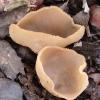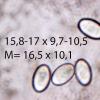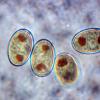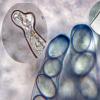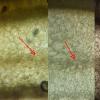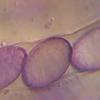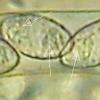
15-12-2025 15:48
 Danny Newman
Danny Newman
Melanospora cf. lagenaria on old, rotting, fallen

15-12-2025 15:54
 Johan Boonefaes
Johan Boonefaes
Unknown anamorph found on the ground in coastal sa

15-12-2025 21:11
 Hardware Tony
Hardware Tony
Small clavate hairs, negative croziers and IKI bb

15-12-2025 07:09
 Danny Newman
Danny Newman
indet. Rutstroemiaceae sp. on unk. fallen leavesMc

15-12-2025 07:05
 Danny Newman
Danny Newman
Pseudosclerococcum golindoi (det: Zotto)near Cosb

15-12-2025 11:49
 Danny Newman
Danny Newman
ITS sequences from the following two collections B

15-12-2025 12:34
 Danny Newman
Danny Newman
indet. Rhytismataceae on oak leafnear Purchase Roa

09-12-2025 12:06
 Andgelo Mombert
Andgelo Mombert
Bonjour,Je recherche l'article concernant Hypobryo
Peziza
Castillo Joseba,
25-02-2021 11:37
No tienen latex
Pienso en Peziza vadia ?
A ver que os parece
Saludos
Joseba
Castillo Joseba,
28-02-2021 08:46
Re : Peziza
No hay ninguna sugerencia?
Mirek Gryc,
28-02-2021 09:07
Lothar Krieglsteiner,
28-02-2021 09:07

Re : Peziza
You made your suggestion yourself. P. varia should be correct, at least today, as names like repanda and micropus habe become synonyms.
Best regards, Lothar
Best regards, Lothar
Mirek Gryc,
28-02-2021 09:53
Re : Peziza
Hi Lothar
I also think P. varia is very likely, but more data is needed to be sure.
I have P. arvernensis quite often this time of year which is very similar to P. varia. Based on Joseb's data, this species cannot be ruled out as well.
In addition to the textures, careful observation of the spores in the water could help. P. arvernensis spores contain polarized tiny multigutates. They are sometimes very hard to notice, but this feature allows me to distinguish young P. arvernensis (spores without ornamentation yet) from P. varia.
greetings
Mirek
I also think P. varia is very likely, but more data is needed to be sure.
I have P. arvernensis quite often this time of year which is very similar to P. varia. Based on Joseb's data, this species cannot be ruled out as well.
In addition to the textures, careful observation of the spores in the water could help. P. arvernensis spores contain polarized tiny multigutates. They are sometimes very hard to notice, but this feature allows me to distinguish young P. arvernensis (spores without ornamentation yet) from P. varia.
greetings
Mirek
Castillo Joseba,
28-02-2021 09:56
Re : Peziza
Muchas gracias Lothar y Mirek, me habeis ayudado mucho, hare un pocomas de micro
Saludos
Joseba
Saludos
Joseba
Lothar Krieglsteiner,
28-02-2021 09:57

Re : Peziza
Hi Mirek,
thanks fo the hint concerning the spores of varia and arvernensis. I will try to look at this feature in future.
Josebas fungus looks quite ripe in my opinion. So if it is arvernensis, the ornamented spores should already be observable (?). But you are right with your doubt.
Best regards, Lothar
thanks fo the hint concerning the spores of varia and arvernensis. I will try to look at this feature in future.
Josebas fungus looks quite ripe in my opinion. So if it is arvernensis, the ornamented spores should already be observable (?). But you are right with your doubt.
Best regards, Lothar
Mirek Gryc,
28-02-2021 11:02
Re : Peziza
I do not know about Spain, but in my case five-centimeter Peziza varia and arvernensis are very often immature. We have a completely different atmosphere. This year, in my forests, there is still almost half a meter of snow. Such a thick layer of snow also has its advantages. Under such a thick layer, spring asco, which grows on the litter, develops very well.
Spring, however, is already beginning to reach me, maybe soon I will go out into the field
Mirek
Spring, however, is already beginning to reach me, maybe soon I will go out into the field
Mirek
